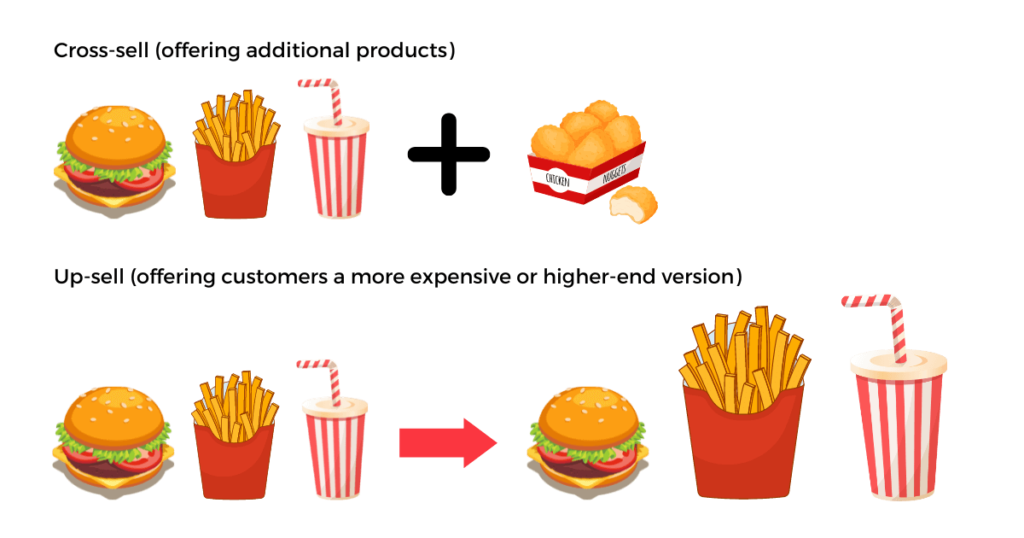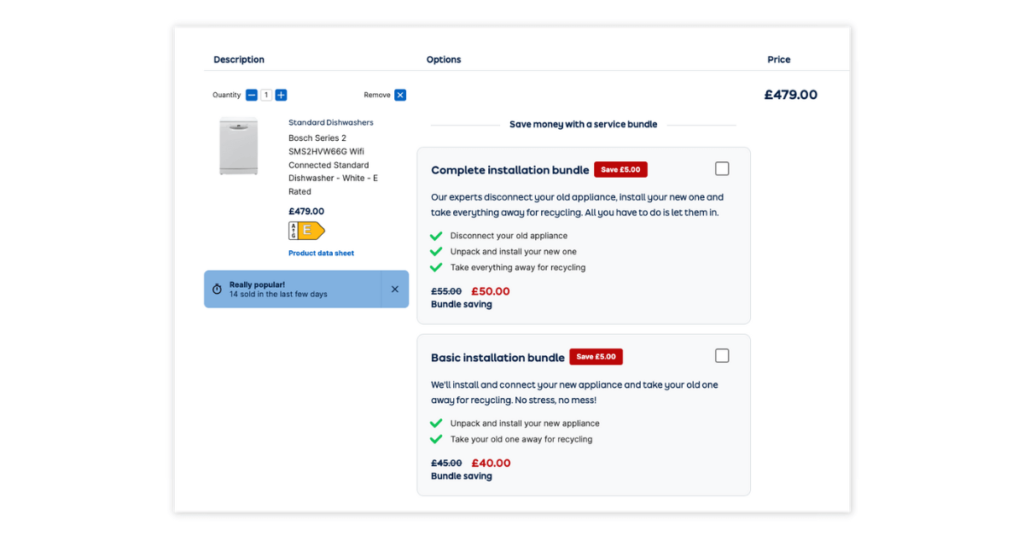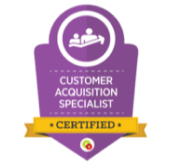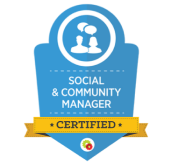Love it or hate it, retail companies have always been able to convince you to spend more than you planned.
They’re masters of the cross-sell.
And the secret is twofold – adding relevant value and timing.
They make a targeted cross-sell just when you are at your most vulnerable to persuasion using techniques such as:
- Magazines, chocolate bars, and batteries next to the till in a supermarket
- Encouraging you to try on a new bicycle helmet when buying a new bike
- Offering extended warranties and discounts on regular maintenance at the car showroom
- Installation services + removal of old appliances when buying new white goods
- Being prompted to add an extra complementary item (or two) to your website shopping basket right before checkout
They’re all designed to catch your attention when your mind is in ‘buying’ mode.
If you’re already spending £100, why not spend £110?
What is cross-selling?
Cross-selling is a marketing technique that involves offering additional products or services to prospects or customers who are in the process of making a purchase.
The goal of cross-selling is to increase revenue by encouraging customers to buy more than a single product or service.
For example, when you are buying a new phone, the salesperson might suggest buying a phone case too.
Similarly, when you order a steak at a restaurant, the staff may ask if you would like to add a sauce to your order.
Cross-selling helps businesses to maximise their profits by increasing the average value of each customer transaction.
And there’s plenty of opportunity to blend cross-selling into your school prospect’s sales journey.
What is the difference between cross-selling and up-selling?
Cross-selling and up-selling are both techniques used in sales and marketing to increase revenue by encouraging customers to purchase more products or services.
However, there is a fundamental difference between the two concepts.
Cross-selling refers to the practice of offering customers additional products or services that complement or are related to the item they are currently purchasing.
Upselling, on the other hand, involves offering customers a more expensive or higher-end version of the product they are currently interested in.
For example, everyone recognises this up-sell question at the fast food counter: “Would you like to supersize your meal for an extra 30p?”
But the cross-sell version would be “Would you like to add chicken nuggets to your meal for an extra 30p?”

How to cross-sell to schools and teachers
Certainly, everyone who sells to schools can learn a lot from retail’s fine-tuned cross-selling techniques.
Why?
Because, typically, when selling to schools the cross-selling tends to happen well AFTER the main sale has happened.
Cross-sells often get pushed months past the initial sale or free trial, if they happen at all.
“Hi, you bought our curriculum software last term. Would you like to buy some training too?”
Any busy teacher is likely to pass on that offer. Not because your training is no good or too expensive.
It’s because the moment has passed.
No matter how awesome your cross-sell, it’s extra cognitive load on the teacher. It means going back for more budget. It’s figuring out how to fit it into their hectic schedule.
So the easiest thing to do is say “No thanks”.
When is the best time to cross-sell to a teacher?
The best time to cross-sell an additional service is when the customer is about to be engaged with your business and has decided to make a purchase.
If a teacher or school finance officer is ready to pull the trigger on a product or service from your company, they may be open to hearing about related products or services.
If you don’t ask, you don’t get, right?
Even though a school may have been through a procurement process to buy your main product you could, at decision time, offer ‘harmonious’ add-ons.
By pitching extras before the sale closes that a) makes sense and b) adds value to your new customer, you can create a win-win for you AND the school:
- It’s a less expensive commitment if it’s included in a subscription package, rather than trying to offer this separately later on.
- It’s the ideal time to upsell as your customer is already primed to purchase. It’ll be harder to pitch to them in the same state of mind at a later date when other decision-makers and budget approval dates need to be considered.
- You’re offering an additional, long-term service that is of value to the customer, thereby proactively nurturing your customer, and thinking about retention.
Ideas for educational cross-sells
Granted, if a school is spending £2000 on your platform they’re unlikely to spontaneously spend another £500 on one of your other products.
But that should not stop you building value added cross-sell opportunities such as:
- Instant enrolment in a free trial to one or more of your other products (even better if access is granted under the same login)
- Fast tracked or “Skip the queue” school installation services
- On site training (at a ‘buy now or miss out’ discounted price, naturally!)
- An audit service e.g. health and safety assessment
- Exclusive access to a virtual training course targeted to your specific audience e.g. on new government legislation
- Unlocking an advanced data or reporting module for the special price of £X
- Access to a premium support package
How to position a cross-sell
It’s important to offer cross-selling suggestions in a way that feels natural and not pushy.
Think carefully about what add-ons would benefit your customer, like training courses or CPD services – ideal for rolling out a new platform that will be used daily by multiple department heads, teachers, administrators, and/or parents.



You should take the time to understand the customer’s needs and preferences and make relevant suggestions that will add value to their experience.
Cross-selling after the sale can be painful… but pushing an item that doesn’t make sense can be excruciating.
If the customer feels like you are just trying to sell them something they don’t need or want, they may become frustrated and be less likely to make a purchase at all.













